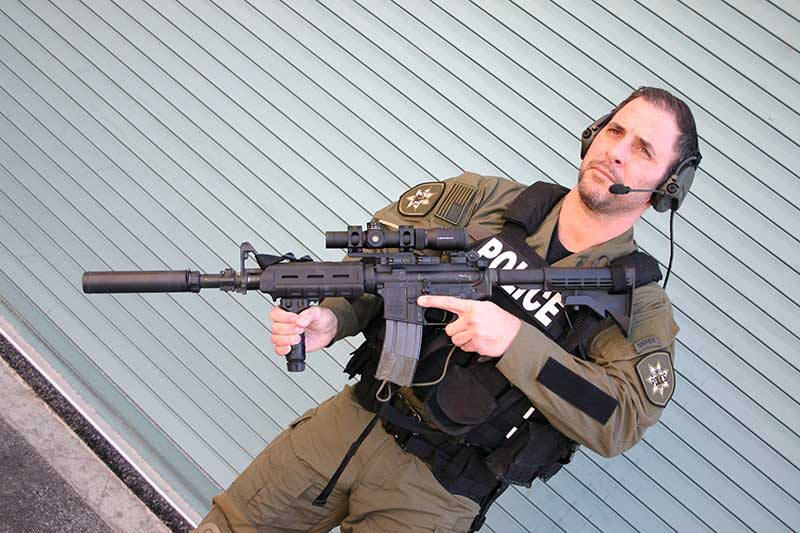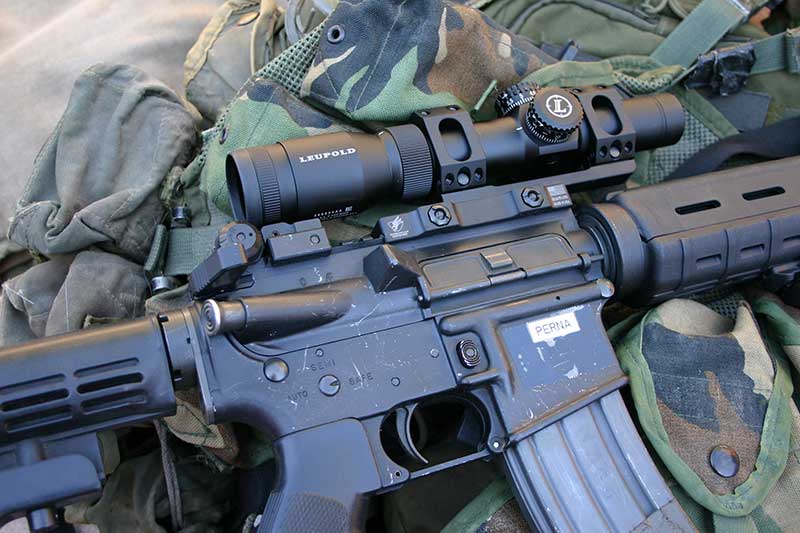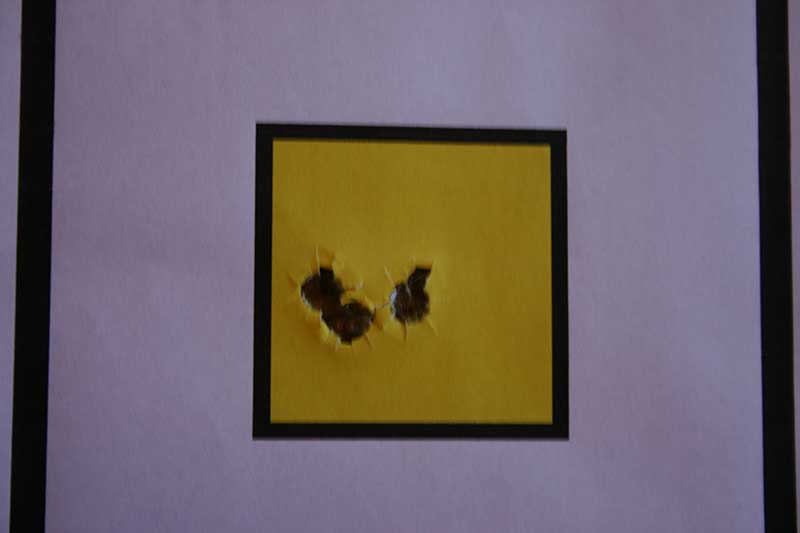
AC-123120-Sniper-IS-2-800
Comparisons are often drawn between law enforcement (LE) and military snipers. Law enforcement snipers are dealing with significantly shorter ranges compared to their military counterparts. Although trained to do rural operations, most law enforcement sniper ops are urban in nature.
Law enforcement snipers operate almost exclusively with their tactical entry teams directly supporting them. Military snipers will often conduct “stand alone” missions seeking out particular targets or focusing on known enemy areas of concentration.
Furthermore, not all law enforcement snipers are dedicated solely to that role. Many pull “double duty” as entry team members and only as snipers when the mission dictates. Not an ideal situation, but with smaller departments and limited budgets it’s often a necessity.
A strong argument can be made for separate teams of entry team members and snipers, but if the money and manpower isn’t there then it simply isn’t going to be that way. That’s not to say that military snipers don’t fulfill various roles, but generally it’s going to be an offshoot of their long gun job, such as reconnaissance and overwatch.
The limited engagement ranges and multitasking of LE snipers is reflected in the weapons they use. The ideal weapon for an LE sniper is a gun that can double as an entry weapon as well as a long-range engagement weapon and have the optics and other accessories to accomplish this. This is where things can get difficult.
An ideal platform would most likely be a .308 AR. The .308 round has proven to be successful at long ranges and has been the primary sniping round for many years. The .308 is a good barrier penetrating round when using TAP ammo and is effective on windshields (or as effective as a round can be given the unpredictable nature of bullets when they hit tempered automobile glass). By sheer size and bullet weight it is superior to .223 in that regard.
A few issues about using a .308 AR as multi-role platform in law enforcement operations. First, interoperability. Most teams use .223 ARs and M4s for entry weapons. In a bad tactical day when a .308 operator runs low on ammo in a protracted gunfight he can’t use ammo from any of the .223 gunners. Albeit an unlikely occurrence, it still is a tactical concern.
The second issue is price. Quality .308 ARs are expensive—anywhere between $3,000 to $8,000. This doesn’t include items like scopes, bipods and other sniper related gear. This price tag is out of reach of most agencies.
Another issue related to .308 ARs is optics. To maximize the potential of the round most are equipped with high power scopes. An ideal sniper optic makes a lousy entry optic and visa-versa. A 3-12 power scope is pretty much useless when clearing rooms, even on the lowest setting.
There are optics available that can mount on top of scopes, but there can be a significant offset from where the optic is mounted and where the bullet exits the barrel. This offset can be three inches or more.
On the flip side, a non-magnified red dot optic doesn’t do a sniper much good at distance.
Enter the multi-power red dot scope. These scopes are often in the 1-4 or 1-6 category. These optics allow operators to put it on a low power setting while conducting a tactical entry and to crank it up while doing scouting or sniping missions.
Of course, like everything, there are drawbacks. A 4 or even 6 power scope isn’t going to provide the same level of clarity or detail as a 12 power or higher. This can be important during scouting operations when more detail is necessary. Conversely, some optics lowest settings are actually 1.25 or 1.5 power making it slightly slower to engage targets.
The tactical team I currently serve on has our snipers serving dual roles (entry team members, snipers). We have traditionally used only Remington 700s as our primary sniping gun. When we put on our “entry hats” we used M4s with standard optics like EOTechs and Aimpoint PROs, both unmagnified.
Both are good weapons, but both fill specific roles and they can’t be used interchangeably (trying clearing a house with a bolt action rifle with a 24-inch barrel).
As an in between solution we’ve purchased Leupold 1.25-4 power scopes with the FireDot reticle. We have mounted these on our M4s. This has given us the ability to use the weapon for entries when set on the 1.25 power and for sniper and perimeter missions when set at the 4 power.
Granted the 4 power is a little anemic when doing sniper related scouting, but it is good enough for ad hoc sniper missions, especially when paired with a good set of binoculars.
To further enhance the functionality we opted to use American Defense Recon quick release mounts. If the operator chooses to not use the optic they can remove it and use iron sights or mount an Aimpoint PRO which has a built in quick release.
American Defense guarantees that the scope will return to zero when remounted. We’ve tested these mounts by shooting with them, taking them off and remounting them and shooting again. The mount maintained it’s zero with no notable shift at 25 yards. Given that we’re not taking 1,000-yard shots I’d feel comfortable with that.
This is in many ways similar to the United States Army’s’ Designated Marksman Program. DM’s receive special training at the Army Marksmanship unit at Ft. Benning in extended engagements. They may receive an accurized M4 or other weapon with enhanced (magnified optics).
Their purpose is to fill the gap between infantrymen and snipers dealing with threats beyond the range of traditional weapons operated by soldiers lacking specialized training.
There are a lot of really good multipurpose optics out there today. Companies such as Vortex, Trijicon and others make excellent optics that serve as both red dot optics and scopes. You are going to pay more for a true one power, but the complete lack of magnification makes it easier to acquire targets. That being said, with a little training, an operator can pick up close targets about as quickly with a 1.5 power.
If we deploy on a dedicated sniper mission we still use the Remington 700s with a Leupold 3-12. We recently acquired Nightforce 3-22 power scopes for added magnification. Snipers will generally deploy as teams, one with a 700 and the other with an M4 with it’s variable red dot optic.
I’m the first to admit the “golf bag” approach isn’t always ideal (as in one gun for getting off the green, another for putting). It would be better if there was one gun that could fit every mission.
Arguably, a .308 AR come pretty close to being a multirole gun (except for the fore-mentioned ammunition/cost issues), especially with multiple optics with quick attach/detatch capability like a high power long-range scope, a 1-6 optic and pure “red dot” sight. But, unless you are assigned to Seal Team 6, this probably won’t be part of your kit.
I conducted a comparison of my Remington 700 and my M4 with variable optic. I did a rapid fire drill at 50 yards. I chose fifty yards because it’s a fairly typical law enforcement long gun engagement range.
Obviously the .308 on 12 power shot tighter groups, but the M4 on 4 power definitely held it’s own.
CONCLUSION
No weapon works perfectly in every situation. What we carry is dictated by everything from the mission at hand to the amount of money available to buy what we need.
In the case of the .223 AR with a variable optic it comes pretty close to meeting most requirements for law enforcement long gun applications.
Nick Perna is a Sergeant with the Redwood City Police Department in Northern California. He has spent much of his career as a gang and narcotics investigator. He has been a member of a multi-jurisdictional SWAT team since 2001 and is currently a team leader. He previously served as a paratrooper in the U.S. Army and is a veteran of Operation Iraqi Freedom. He has a Master’s Degree from the University Of San Francisco.


















